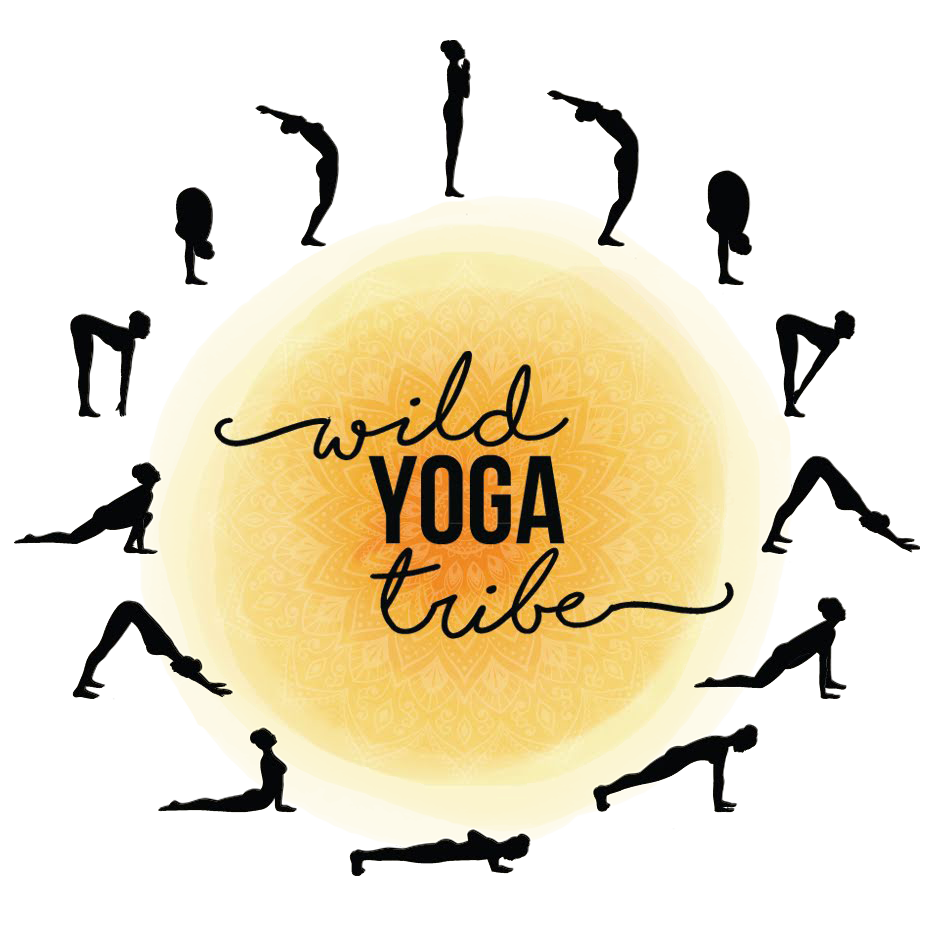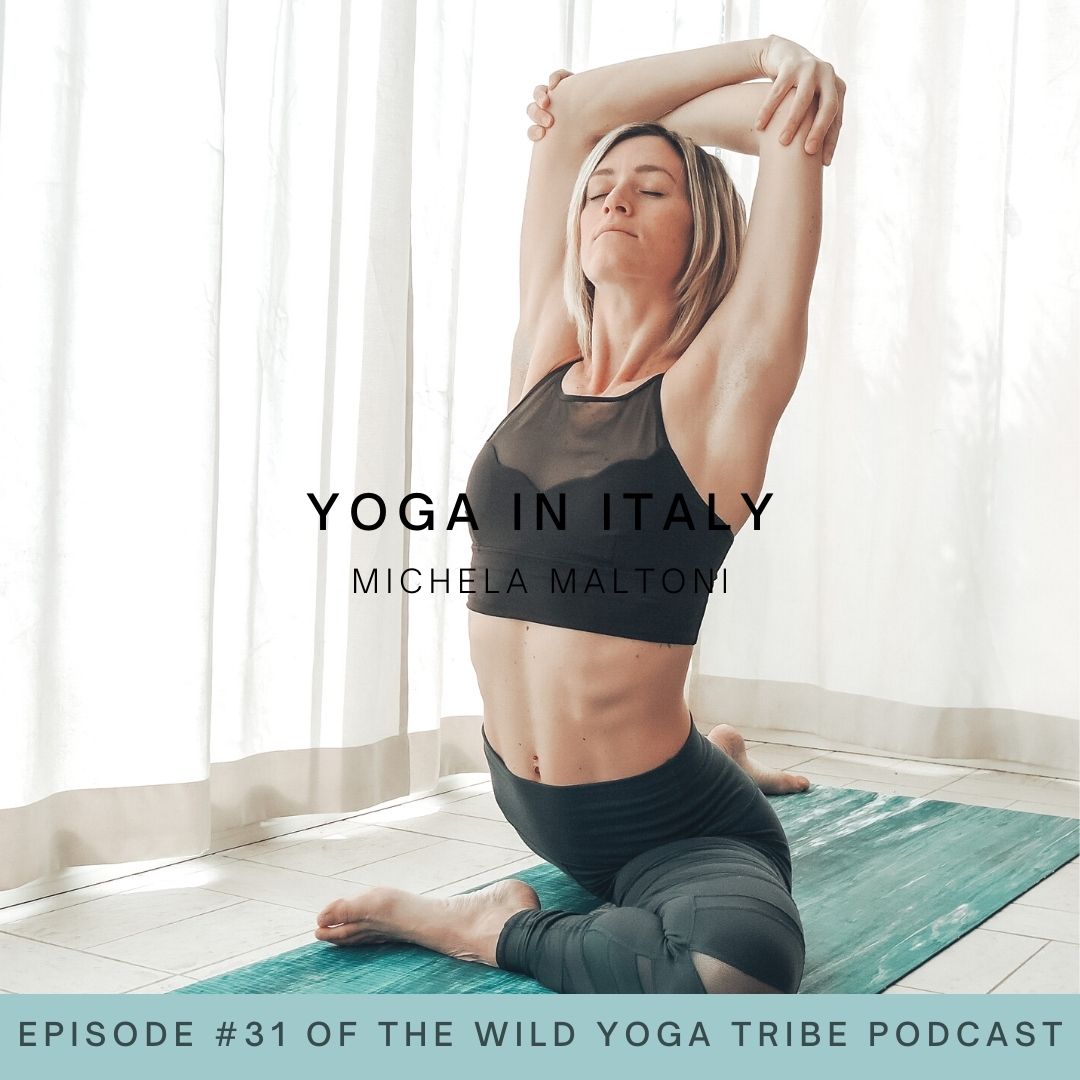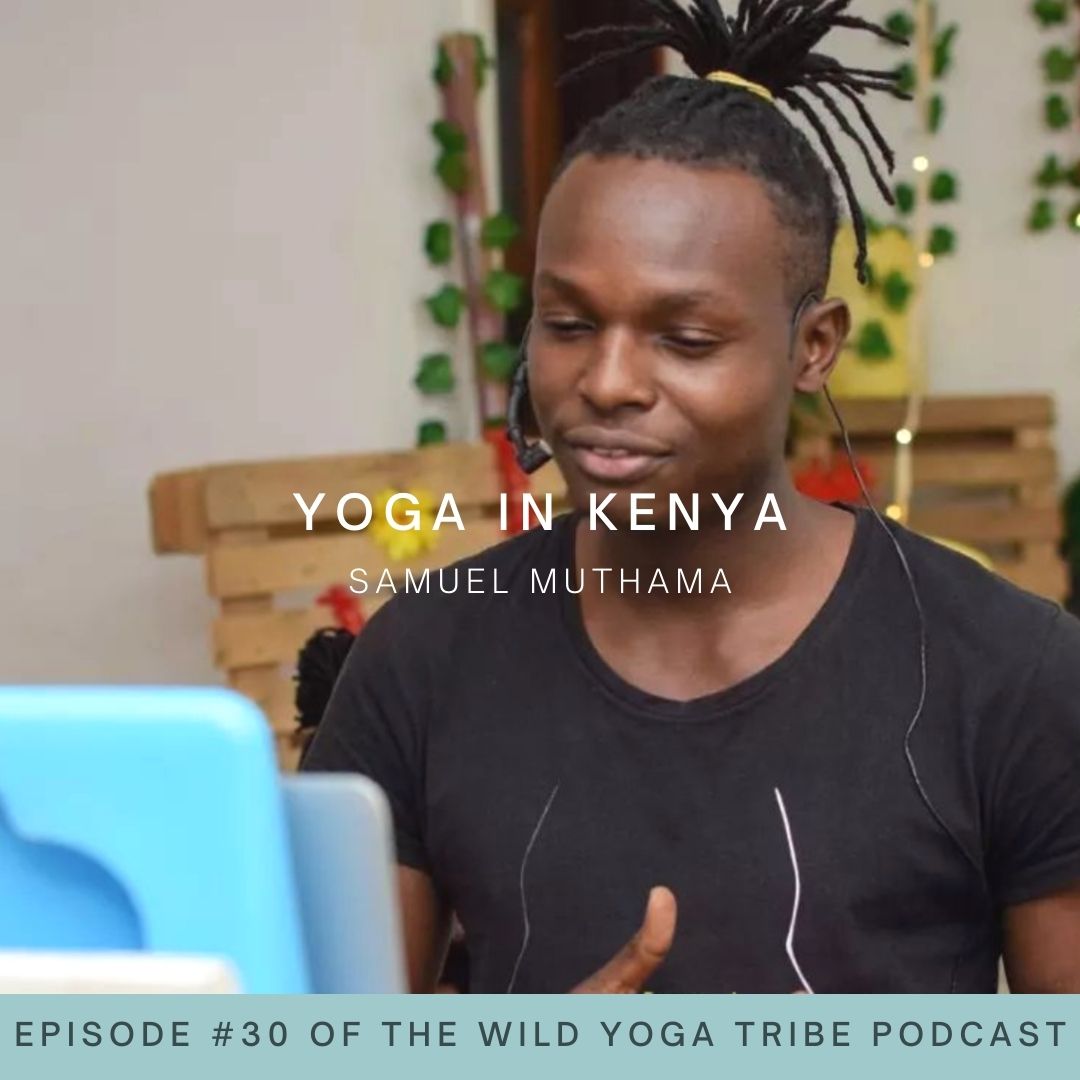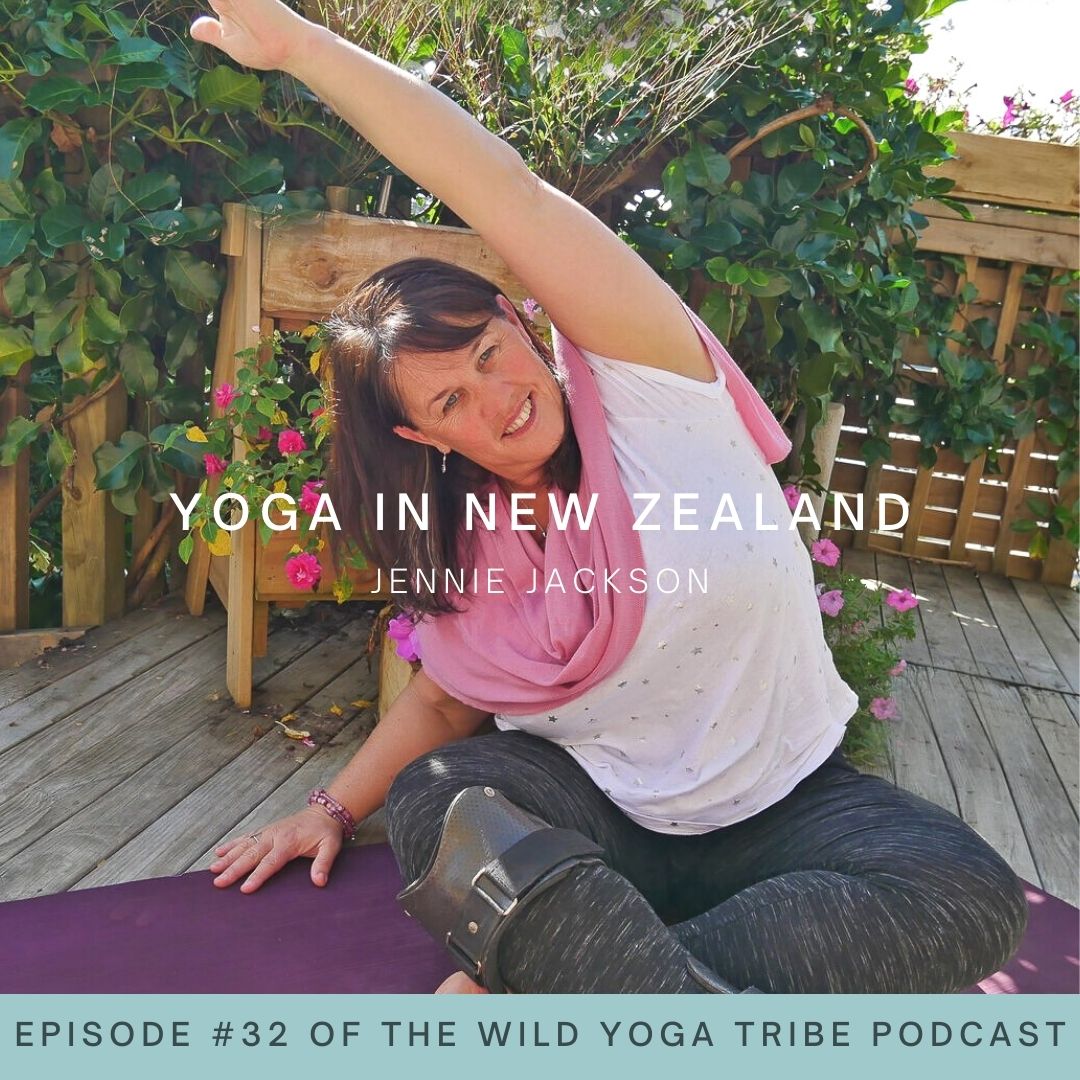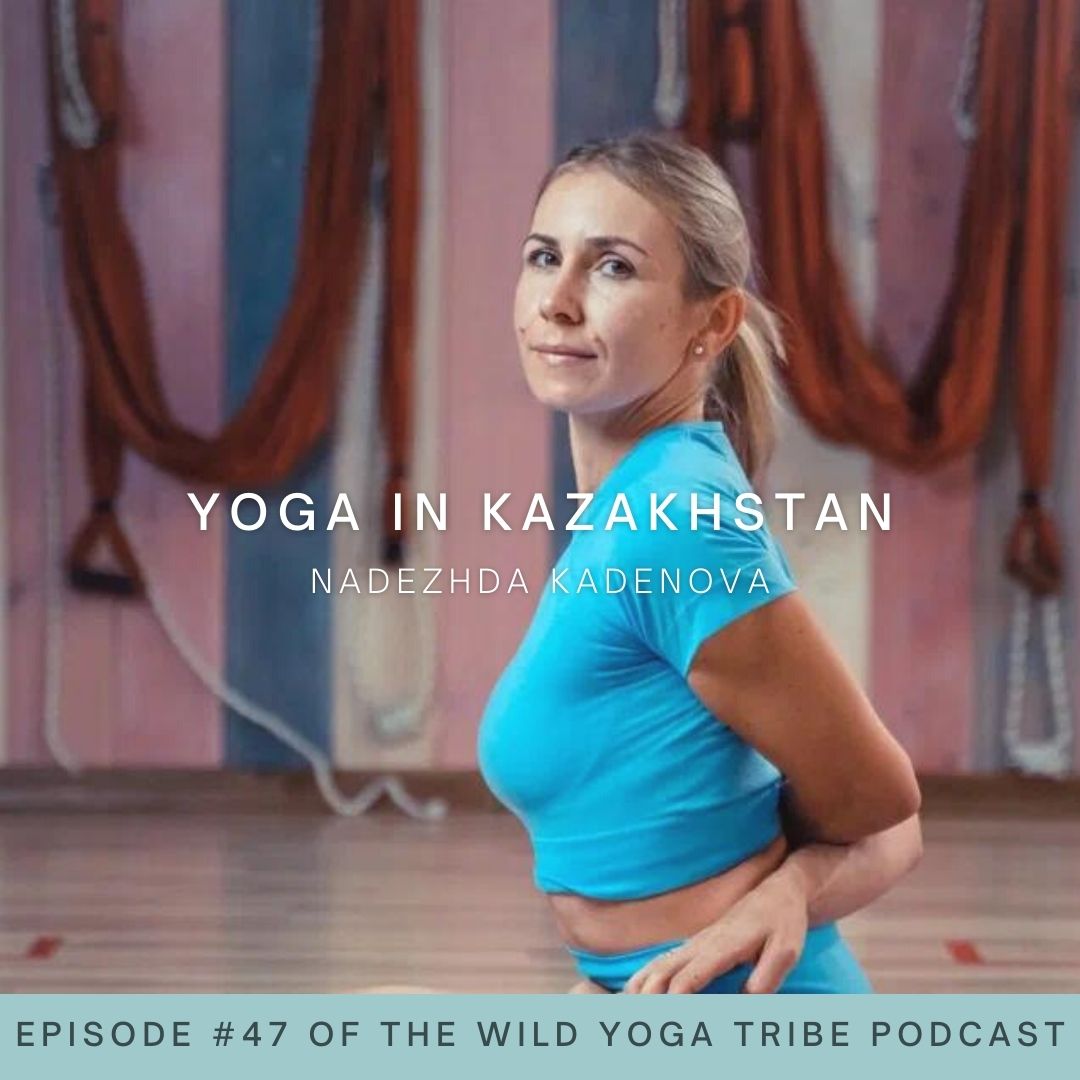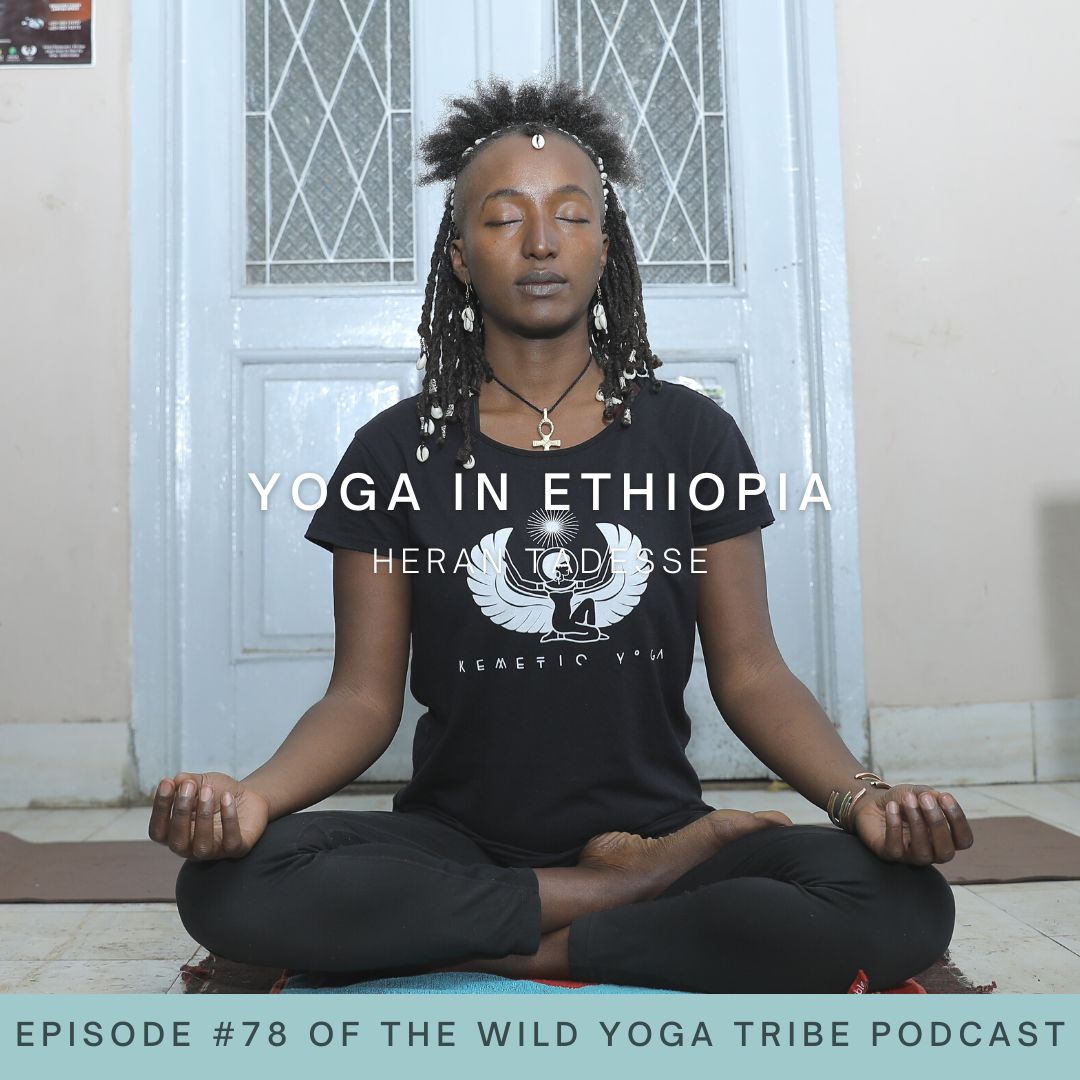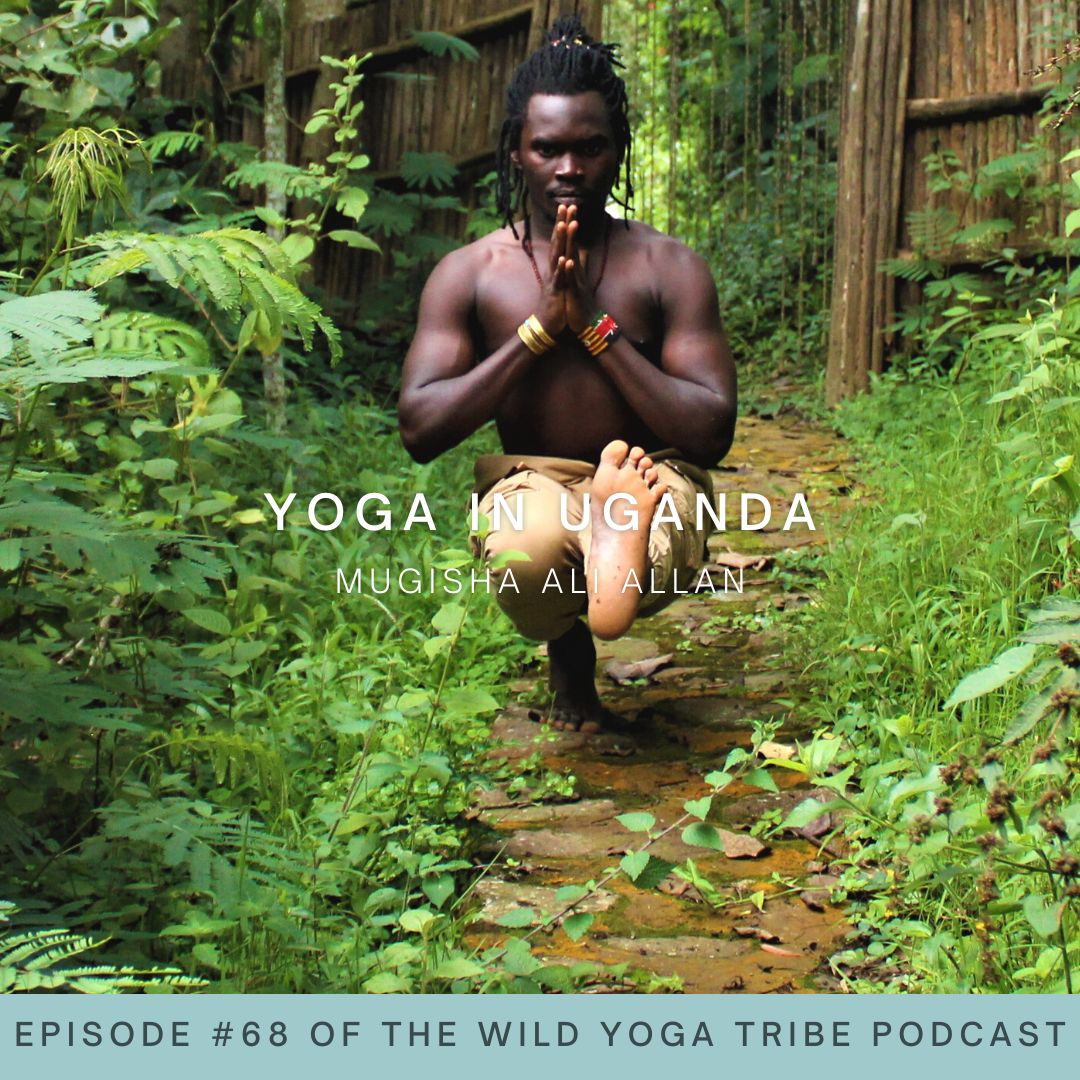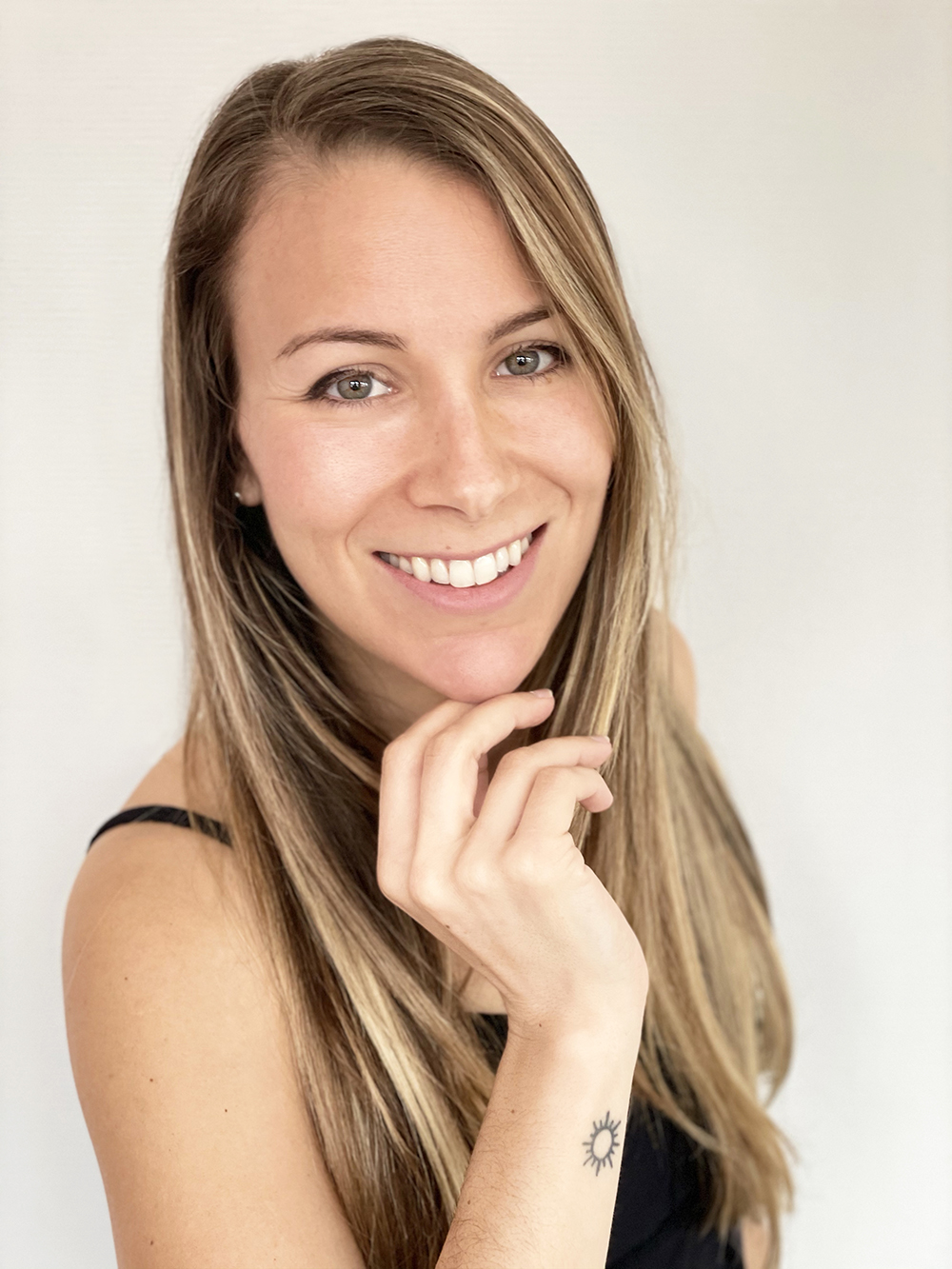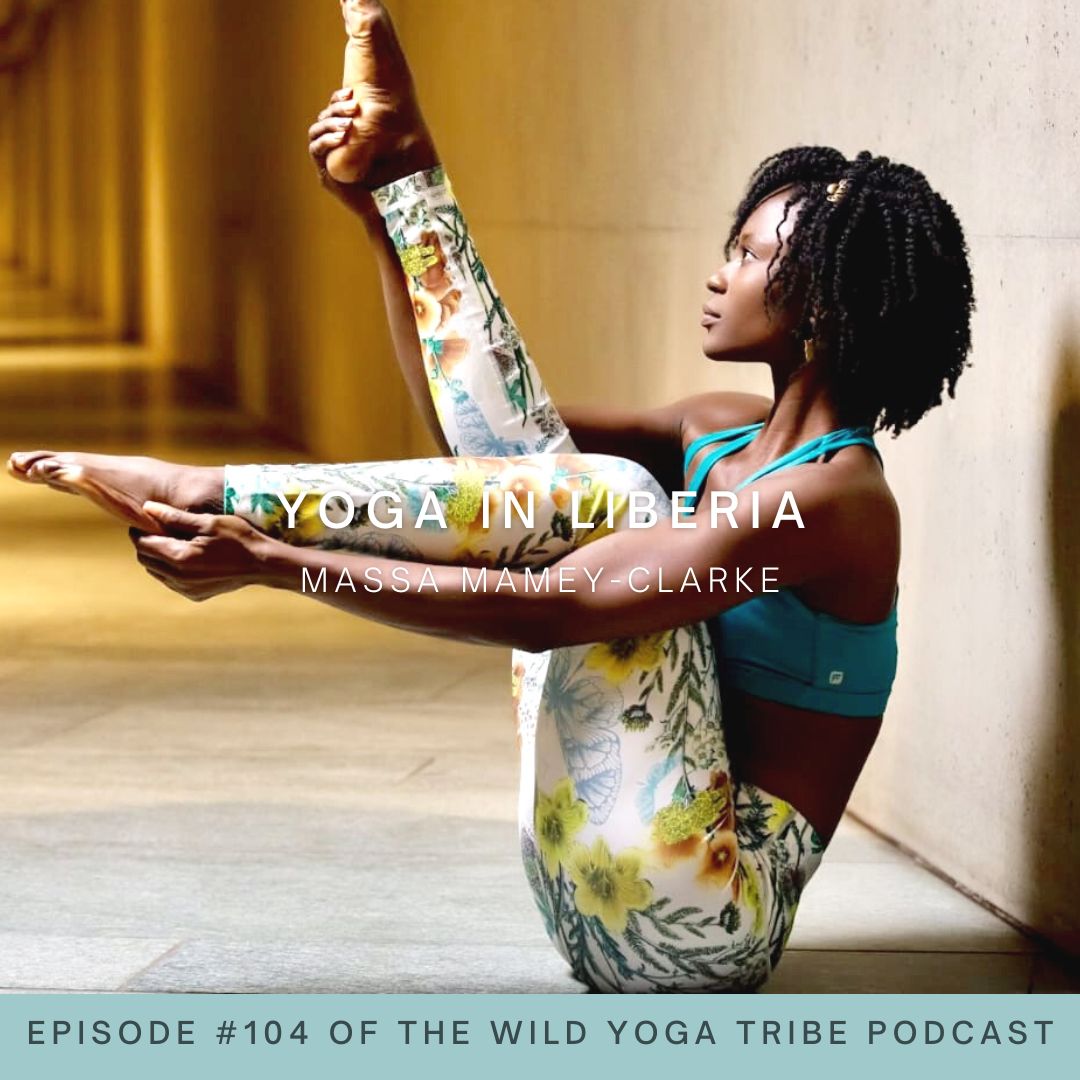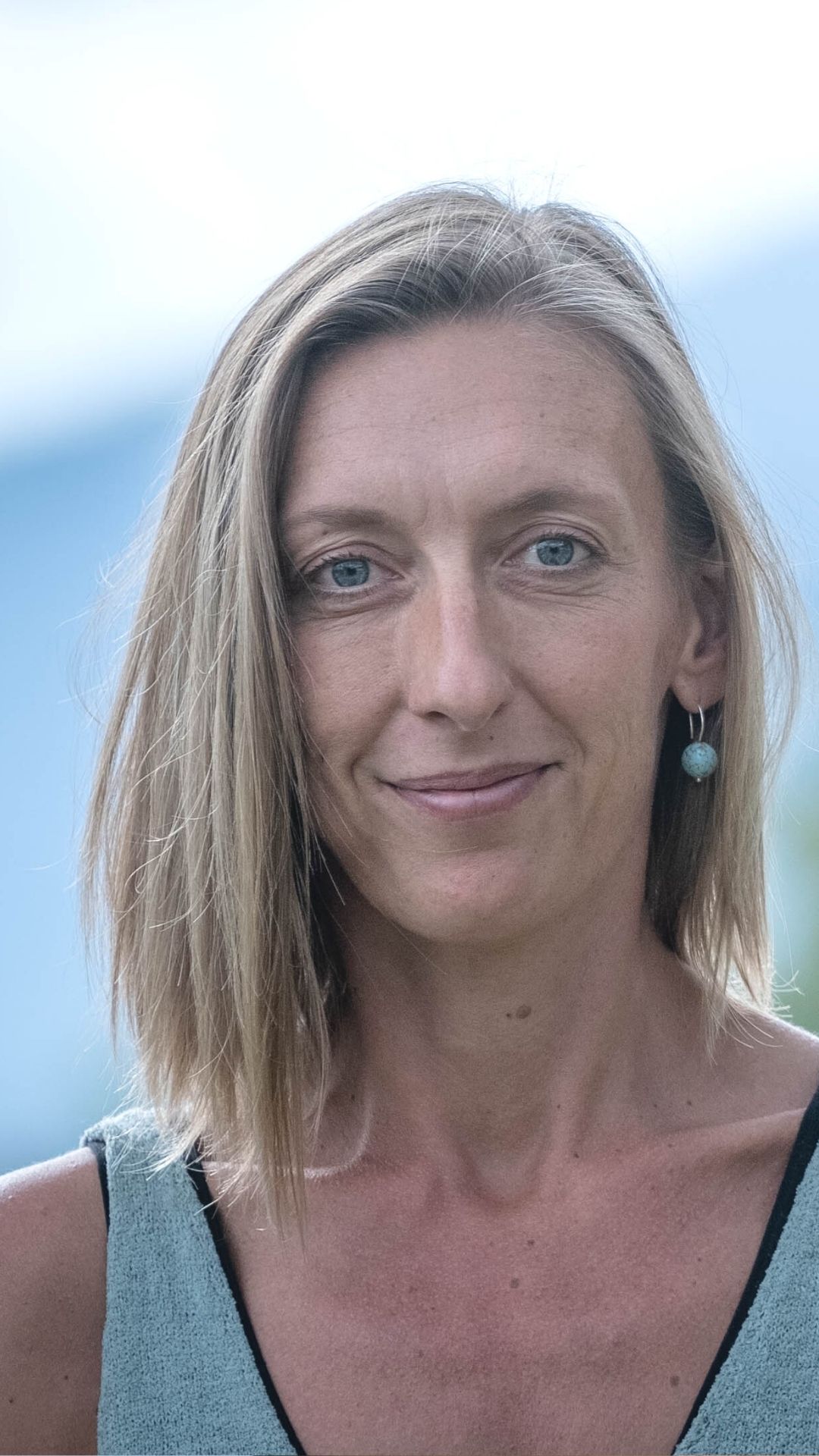
EPISODE #29 – YOGA IN ESTONIA
Meet Liina Tael
Meet Liina Tael, a yoga teacher from Estonia who teaches us all about yoga in Estonia. Liina talks with deep honesty about how yoga is not a savior, nor a holy grail. Welcome to yoga in Estonia!
Wild Yoga Tribe Podcast Episode #29 – Yoga is not a Holy Grail – Yoga in Estonia with Liina Tael
Welcome to Episode #29 of the Wild Yoga Tribe Podcast! This week, I welcome Liina Tael onto the show. She is a yoga teacher from Estonia.
My conversation with Liina Tael, a yoga teacher from Estonia, was so beautiful as we delved into Liina’s journey with yoga— from a mindset of “no pain, no gain,” and “work hard, play hard” to a place of tenderness and self-inquiry, and the essence of yin yoga. I hope our conversation made you curious about becoming curious yourself— about your own individual experience with yoga in your body, energy, and emotions. I also loved how Liina offered up gentle warnings about looking towards yoga like a holy grail, or as a sort of spiritual bypass.
If you’re looking to tune into a podcast episode that really focuses on where the rubber meets the road, then this is the conversation for you.
Tell me more about Liina Tael
Liina Tael is has been practicing yoga for 25 years and teaching yoga since 2007. She Received her first yoga teacher training in Australia, and started her journey with Yin yoga in Vancouver with Sarah Powers, and with Sebastian Pucelle and Murielle Burellier. She went on to complete a Restorative Yoga teacher training with Judith Lasater. Currently, Liina teaches yoga in Berlin where she focuses on inquiry and awareness based yoga, which can take both softer and stronger forms, always circling back to building greater autonomy and agency, self-awareness through tender and compassionate self-inquiry.
What to expect in the Yoga In Estonia episode of the Wild Yoga Tribe Podcast
Liina Tael is a yoga teacher from Estonia, who spent years in Australia learning yoga and teaching yoga, she now lives in Berlin and has plans to build a home in Italy in the near future. As a global citizen, Liina feels enormous grief over the way humans are treating the world, and relating to the world. In fact, she feels “Grief for how we are treating the world, and our wider community.” She invites us to imagine imagine what the world will be like when we start to live from that place where we feel that connection— the connection that is engendered by yoga.
Liina encourages us to not hide from our feelings and to not hide from our humanness. She talks about yoga as: “This practice is not about avoiding life, and not about transcendence. It’s important these days to wake up while you’re living your life and you’re out in the world. It’s not the model of being on a mountaintop, withdrawn from the world.” She calls for us to wake up and to take and make actions, decisions, and choices from a place of connection and compassion.
It was so powerful how Liina highlighted that, despite what the media and social media would have us believe, yoga is not actually body-centric. Ask yourself: “Why am I really doing this? Don’t just let the “beautiful why” that we present to the world, be the only why. What goes below the radar? There’s usually something underneath that.”
My conversation with Liina was a powerful one indeed. She has such a beautiful perspective on the individual and the collective, and how to align with our truest essence.
For the skimmers – What’s in the Estonia episode?
- Where the rubber meets the road – How yoga practice shows up and shapes how we act out in the world.
- The essence of Yin: that which is hidden, below the surface, the feminine, the darkness, the reflection, and the allowing.
- A warning of yoga becoming such a “spiritual bypass,” as we see magnified in the current times.
- Careful about thinking about yoga as a holy grail
- What is practicing on your yoga mat with you?
- We live in a yin deficient world
Favorite Quote from Liina Tael
“Deep down that’s what motivates me is if we are able to connect to ourselves more deeply, be in our discomfort, turn towards like our own wounding, our own past that has not been integrated. Like all of that to me is turning towards the end.”
What’s in the Yoga in Estonia episode?
Feel like skimming?
Where the rubber meets the road - How yoga practice shows up and shapes how we act out in the world
The essence of Yin: that which is hidden, below the surface, the feminine, the darkness, the reflection, and the allowing.
A warning of yoga becoming such a “spiritual bypass,” as we see magnified in the current times
Careful about thinking about yoga as a holy grail
What is practicing on your yoga mat with you?
Connect with Liina Tael
Yin yoga teacher training: https://www.liinayoga.com/yinyogatt.html
Online offers (Livestream & On-demand): https://www.liinayoga.com/yogaonline.html
Instagram: instagram.com/liinatael
Want more?
https://wildyogatribe.com/thepodcast/
Everything you need is just one click away! Check out all the resources here: https://linktr.ee/wildyogatribe
JOIN ME FOR LIVE-STREAMED YOGA CLASSES!
PODCAST TRANSCRIPTION
Read + Reflect + Respond
Wild Yoga Tribe Podcast Episode #29 – Yoga is not a Holy Grail – Yoga in Estonia with Liina Tael
[00:00:00] Lily Allen-Duenas: Welcome. Welcome. Welcome to the Wild Yoga Tribe Podcast. I’m your host, Lily Allen-Duenas. Together we’ll talk about the world of yoga and we’ll talk to people from around the world. I wanted to also let you all know that I will be teaching yoga online. This year, classes will be live streamed on a platform called Moxie, and I have $25 dollar off coupons to send you, valid in January.
[00:00:32] And I would love if you could join me for a class to help you feel centered, refreshed, and filled with ease. Ready to dive into this show. Let’s get started.
[00:00:46] Liina Tael has been practicing yoga for 25 years and teaching yoga since 2007, she received her first yoga teacher training in Australia and started her journey with yin yoga with Sarah Powers. And then with Sebastian Pucelle and Murielle Burellier. She went to complete a restorative yoga teacher training with Judith Lasater.
[00:01:11] Currently Liina teaches yoga in Berlin where she focuses on inquiry and awareness based yoga, which can take both softer and stronger forms. Always circling back to building greater autonomy and agency self-awareness through tender and compassionate self inquiry. Thank you so much, Liina, for joining me on the show today.
[00:01:33] Liina Tael: Hello. Hello. Hi Lily.
[00:01:36] Lily Allen-Duenas: So I am so excited to dive into you and your story and your relationship with yoga. The more I read about you, the more I’ve Googled, the more conversations we’ve had, the more I haven’t been able to contain this excitement. So to kick off the conversation, let’s hear how yoga first came into your life.
How yoga came into Liina’s life
[00:01:55] Liina Tael: To be honest, that part was a complete accident. I think I had a coworker who liked a guy and she found out that this guy is going to a yoga class and she basically just begged me to go with her as we were going to go, so to speak, to spy on him. So we went to this yoga class that was held at the back of a gym.
[00:02:24] There was an aerobics class before the yoga class. So when you walked into the room, it was all foggy from the sweat and jumping before all the, there was one wall that was all complete Miros and you had this pumping music coming in from the gym that was right next door. And that was my first yoga experience.
[00:02:45] It happened to be Kundalini yoga, which at the time, I didn’t know, there were different types of yoga. And I basically, I just knew nothing about yoga other than after that first class that I grudgingly went along with. I just hadn’t felt what I felt before. And so I actually got going back. It was no longer about spying on that guy, but I just, yeah, I just kept going for years and years, I had Tuesday and Thursday evenings were my yoga evenings.
[00:03:25] And it was at a time in my life when I was working in a corporate world. And I think a couple of years into practicing, I had a breakup that I took really hot. And it was that class that twice a week was some kind of a refuge for me, which I didn’t know how to put into words back then.
[00:03:51] None of my friends were coming, no, they just accepted that this is what Liina does twice a week. I was also very much in a mindset of work, hard, play hard. So the way I reacted to my then breakup in my early twenties was basically partying hard and drinking and all of that kind of thing.
[00:04:18] At the same time, my career was on a kind of a fast track. So I was also working really hard. And yeah, so it was this weird mix there, but my yoga class was this. Yeah. It was like the sacred thing, which, as I said before, I didn’t word it like that. And my teacher, I don’t know if it was like knowingly, how, like she didn’t bring a lot of.
[00:04:47] Philosophy in, because I think back then I would not have been able to like to take that in, but it was, it was just, I was just trusting the process. And I remember every time I would drive back home from the class or to a party afterwards the way I would describe it as I had this stupid grin on my face for no reason, like that was that first glimpse of some sort of contentment in that very chaotic part of my life.
[00:05:26] Yeah, that was not dependent upon something external or something that I had, bought or received or done. It was just there and then it would fade and then I would need to go back.
[00:05:42] Lily Allen-Duenas: Oh, that’s amazing. I can completely relate to that. That kind of silly grin on the face, that kind of melty glue, like melty, gloppy, glue, that you just feel light and airy, but melty at the same time.
[00:05:56] Liina Tael: Yeah. Yeah.
[00:05:58] Lily Allen-Duenas: So I would love to hear Liina, how you feel that our relationship with yoga and our practice shapes how we actually act out into the world.
Yoga and practices shapes us to act into the world
[00:06:13] Liina Tael: So that was also like over the, over like, what did I say? 25 years of practice? I think that has also changed because of that first year.
[00:06:26] So I think I practiced for about six years doing simply that just going twice a week. And that was my yoga. I didn’t practice on my own. I sometimes tried and I just wasn’t the same. I needed that group class, but I think back then, what the influence was? The effect, what it had back then was a little bit like a band-aid, but it did, so for a momentarily, because I didn’t back then, I didn’t have any like self inquiry tools or self-reflection tools that were given me with yoga.
[00:07:04] So I did the practices. We did the breathing, if Kundalini, there’s a lot of energetics involved. So it makes you a bit high. That’s the grin. And there wasn’t a whole lot of self-reflection happening, so not a whole lot of self-awareness happening. Back then, and as I said, maybe I wasn’t ready for that.
[00:07:25] I wasn’t ready to take that in, but I think something internally in me started to shift and change. And I remember back, back then there was like this question, this nagging question at the back of my head that just wouldn’t let go. It was like, there has to be more to life than this. And I don’t know where that question came from, but I think it, I don’t think my kind of, again, I don’t think my teacher back then worded it like that, but it was just like, I was like, so I’m gonna do, I’m going to work from nine to five and I’m going to do a good job and I’m going to be really good at my profession.
[00:08:04] And then I’m going to get a house and then I’m going to get married and then I’m going to have kids. And I was like, something’s missing, like something in this track that I was on, because it was very much on that track back then in my twenties, I was like, there’s something missing here. There’s a visit there.
[00:08:23] I don’t know. Now I can maybe philosophize around that, but I didn’t have a context back then. How to think about this question. That was kind of in me, that could be like one of the reasons why I eventually did it, my late twenties, I was 29 when I took a sabbatical from my work. And yeah, took a deep dive.
[00:08:47] But later on, obviously after studying more and when my practice kind of shifted and added meditation to it, then a little bit more or a lot more context around that. Yeah, of course it is. I don’t see my practice in life, like two separate things. I always or the way I teach these days, there’s always an overlap.
[00:09:15] There always needs to be like what we do on the mat. It has to have to be able to apply that in life or when I design a class or how, what I want to teach is often influenced like what’s happening in the world or what’s happening in our lives, or what is the, I don’t know, what is the season we are in?
[00:09:35] So how can I make what we do on the mat really really relevant to our day-to-day life.
[00:09:42] Lily Allen-Duenas: Yeah, I think that’s such something I focus on as well as off the mat. The practice on the mat is very important, but it’s off the mat where it really. It marinades and it presents itself. And when you’re able to kind of use some of those mindfulness techniques or some of the yamas and niyamas, or just the ability to cultivate more stillness, there’s so many gifts, I think that come from the practice.
[00:10:10] Is that kind of what you’re referring to as well?
Nervous system and yoga philosophy
[00:10:13] Liina Tael: I’m referring to that and yeah. Yeah. I guess my recent obsession has been a lot around, like I’ve done quite a bit of study in the last couple of years into the nervous system. And so a lot of the things like we can talk about philosophy and, and and I like when it starts to click together that some of the things that I have learned either about yoga philosophy or.
[00:10:50] Daosim or Buddhism. And then you start to see, and now when studying about our biology, like our basics, like physical reactions, I’m like, oh, okay. So there’s also a very, a scientific, very tangible application of that. So what I mean by that is, for example, when we talk about the nervous system then our ability to be present in the moment has to do with our nervous system capacity, our nervous systems resilience to be here.
[00:11:28] And this is something that we can train. This is something that we inherently have, every one of us has a very unique, nervous system patterning. You can change that just like our neuroplasticity, our brain patterns can change. It’s the similar thing with our nervous system for that’s just one example.
[00:11:55] And that’s really empowering. And my mind really like how I say it? I really like when there’s these two worlds that are coming together that the spiritual side of it comes together with the science or the biology. And there’s like several ways and several levels that you can look at things and how you can also then offer it out or how you can teach it.
[00:12:28] So that’s also really excites me.
[00:12:31] Lily Allen-Duenas: Oh my gosh, me too. The neuro, the nervous system and how the parasympathetic or sympathetic are activated and what yoga can do for not just as people usually think the musculoskeletal system of our body or cardiovascular, but what yoga can offer to our endocrine system, our GI system, our even our respiratory or reproductive there’s, it just, it’s all connected.
[00:12:59] And it’s something I really enjoy digging into as well. Yeah, it just goes on and on what we can learn. So I would love to also talk a little bit about yin yoga here, because I know there’s so many benefits for activating the, the nervous system as well, turning off that sympathetic relationship or sympathetic nervous system response and activate more of the parasympathetic for rest and digest with, with yin yoga.
[00:13:32] So I know you’ve practiced Kundalini, Vinyasa and other types of yoga as well. And it seems like yin yoga has really where your heart lies. So can you tell our listeners about your love for yin yoga and also talk about what is the essence of yin yoga?
What is the essence of yin yoga?
[00:13:50] Liina Tael: Maybe a little comment from something that might be interesting to people maybe who are just starting out or when there’s like all these different styles and things like that.
[00:14:01] As I said I initially didn’t know that there were even different styles of yoga and it was somewhere along the way. And that I started to explore and that mentality that I had that I spoke about in my late twenties all throughout my twenties, this. No pain, no gain mentality.
[00:14:23] A little bit that I applied in my work that essentially burned me out. Then that’s why I took a sabbatical which I never returned from, but that’s a longer story. But I took that mentality into my practice. And this is something that I really want to point out that oh, sometimes yoga gets like.
[00:14:47] Shown in this light of this holy grail that you arrived at. And then, you start to do these practices and all of your problems will be solved. And there’s this shiny goal at the end of the, at the end of the path of enlightenment and, once you awaken you are whole and complete and that picture and in my experience that’s not true.
[00:15:12] All of my patterning that I had in my, I’m making air quotes, you can see in my previous life that came riding along with me onto my mat. So one of them being like perfectionism, for example, I love how Brene Brown talks about perfectionism. Like we seem to think that perfectionism is something like us striving to be our best.
[00:15:35] And she points out that no no no no no. That’s not what it is. It’s a shield. It’s like a shield that you lug around to protect yourself. And in fact, that shield is actually something that the weight of perfectionism is something that’s actually preventing you from taking flight. And when I read that, I was just like, wow.
[00:15:56] And there’s something that I’ve been tackling for years and years and years. So I took that mentality with me into my practice. So doing the teacher training and when I was in Australia during my sabbatical and then continuing teaching and continuing practicing, I was very driven, like super disciplined and super driven, a lot of top buzz, which is like this inner fire, this inner discipline.
[00:16:27] That same mentality came with me also to all of my meditation. So for like my first meditation retreat ever was a 10 day vipassana. And the thing that made me sign up for that was like, this is going to be freaking hard. And that was like, what lit everything up in me. Yeah. Yeah. I need to put myself through that fire and I’m not looking back and going, oh, that was wrong or bad.
[00:16:55] Or I took the wrong path or something. No, I think that was all it was part of my journey. There was something in me that I needed to burn through, but essentially there was this breakthrough moment from me about five, six years into my practice and teaching. It was into my teaching and I had been practicing for about 10 years.
[00:17:20] By that time when I saw through it, it was like a glimpse, this glimpse of a moment where I went to hang on, who’s practicing here. And It was my strong willpower. You can call it ego. I don’t do the ego bashing thing either, but it was my strong willpower. The willpower that I, that part of me that was already really strong, was practicing with me on the mat.
[00:17:52] Once I saw through that, there was this quite a period of free fall because I didn’t really know where do you move from when I don’t move from that perfectionist got to get it right. Got to improve, got to fix myself when I don’t move from that mindset. Like where do I move from? And I think it was yin came in around that time.
[00:18:18] And I think I had really good teachers. My first workshop was with Sarah Powers that just opened my eyes to a different mindset. And that’s in a long-winded way. That’s how I’m now coming to what yin, what’s the essence of yin to me. So yeah, initially for me yin as well, it was like this long held postures and it was also challenging.
[00:18:47] So I think that’s also drawing me in, because in my first yin class, I didn’t like it at all. I was like, my mind was judging the whole time and going, what the heck is this? And dah dah dah. And I had my old understanding of anatomy. Sometimes when you come to a practice and you have a baggage of knowledge, sometimes it can be an obstacle.
[00:19:09] So I was like, no you’re not supposed to do this and that. And once I was able to set that aside a bit, I think it was again in the same way, like my first Kundalini, like my mind was resisting, but my body was saying like, yeah yeah yeah, we onto something here. So I kept going. But yeah, so the essence to me no longer is just oh, it’s a long held posture.
[00:19:34] And there’s health benefits to connective tissues and all of that is there. But what excites me is the shift, as I said, the shift, which I’m still working on. I think for me, it’s going to be a lifelong path of how to be in this moment, allowing things to be as they are, which is not in action, which is not being passive, but it is allowing for this moment of, this moment of reflection and type of a surrender.
[00:20:12] But again, it’s not like giving up, but before I jump in and go I need to somehow fix what is, can I allow for what is, can I really make space for that? And in life, of course it also includes being with the whole range of human emotions and life situations, it involves being with loss, being with pain, going into the darkness on the mat.
[00:20:46] I don’t advocate going into pain, but we are in a yin practice, we are being with a certain amount of discomfort. Like it’s, it’s partly there, right. And also for some people simply being still is new and somewhat uncomfortable. So that’s their edge. And so that’s the kind of interplay that I, again, excites me because we live in a yin deficient world, right.
[00:21:18] Like when we look and, we’ve come actually, maybe I need to rephrase that because after our two years of lockdowns, not locked downs, like for a lot, like that’s a big yin phase for the whole world. And for some people, this has been a big moment of stopping and pausing and for others not because then, on top of your work, you’re homeschooling your kids and all of that.
[00:21:46] So I’m not going to assume, but this period has been for people. But in general, I think we live in a yin deficient world. And a lot of our actions out in the world are not grounded in our deepest essence. And that’s why we find ourselves in situations. We end whether it’s in our individual lives or in our collective lives.
[00:22:17] And so I know it sounds a little bit maybe grand, but deep down that’s what motivates me is if we are able to connect to ourselves more deeply, be in our discomfort, turn towards like our own wounding, our own past that has not been integrated. Like all of that to me is turning towards the end.
[00:22:51] And so then. An action that can arise from that space is an action. That’s grounded in yin. And I think the, my hope is that the actions that come from that deeper place of connecting to yourself, also actions that are not just for my benefit, but for the benefit of a wider, wider good. So I often look at the spiritual practice for me that you stays is not just like with my own like spirit or my own depth, but I love this concept that comes from many indigenous cultures and more like shamonic concept of.
[00:23:37] Me connecting deeply is also starting to connect me to like horizontally to my wider community of, my fellow trees and animals and the winged ones and the four leggeds and my mountains. And, it’s just like this whole life on earth. And so can you imagine, like when we can tap into that and not in our minds, but in our bodies feel that connection.
[00:24:06] And I get teary-eyed when I talk about it, because that connection comes with quite a lot of grief for me because of how we are treating this wider community of ours, is horrific really. But can you imagine when we can start to live from that place viscerally.
[00:24:35] Feel that connection and my actions, my decisions, my choices in life, come from that place. Like it will be a different world. So yeah, a bit grand, but gotta aim high.
[00:24:53] Lily Allen-Duenas:Oh, That was beautiful to hear you talk about Liina, and I agree that we are in an inefficient world, given I, although the pandemic has certainly at your right, been a big cycle of yin, but it is we’re fast paced.
[00:25:09] We’re consumers. We’re go go go think, like in a way I think less do more, even though I know we all want to rely on our logic and our prefrontal cortex way too much to make our decisions. And instead of going deep into our, our animal body. And I love that you also were a fan of Mary Oliver.
[00:25:30] I saw that in your newsletter, that your quote for autumn being about those, the trees and turning into pillars of lights and she’s, she’s a gorgeous poet. And also I know passionate about the natural world, which you are as well
[00:25:49] Liina Tael: Yeah. She’s the best nature poet. I think it’s just the way she describes nature and poet poetry is a way to pass on something that can’t be put into words, but there are these amazing beings from time to time who try that.
[00:26:09] And so it more kind of passes on a felt sense and embodied experience. I find that good poetry tries to do that.
[00:26:18] Lily Allen-Duenas: Yeah. There’s so much reverence. I think for, in her words and tenderness and how she sees the extraordinary in the ordinary.
[00:26:27] Liina Tael: Yeah. Yeah.
[00:26:29] Lily Allen-Duenas: So I know maybe it’s a little random, but I would love to ask Liina, what do you think is something people get wrong about yin yoga?
Misconceptions about yin yoga
[00:26:36] Cause I know there’s a lot of misconceptions out there or people just take some guesswork into it. So I thought that’d be fun to ask you
[00:26:44] Liina Tael: To me it’s not like, it’s not passive so much happening, even though it seems like nothing’s happening. And there’s so much that you can find out about yourself and.
[00:27:02] I think sometimes I see it practiced very and with the kind of a young mindset is that five minutes, I have the five minutes on the clock and I’m going to be here and I’m not gonna move. And that kind of misses the point like there needs to be this gentle dance with your own limits with your own interior.
[00:27:30] And it just needs to have that tender, compassionate inquiry with it. I find for me, for, for it to have the effect that it has, that it, the potential that it has. But of course, when I say this, I can really remember. I used to approach it like that a little bit in the beginning.
[00:27:57] So maybe it’s just like this process. And I also really encouraged people to, this is what we tried to do with our yin training. I’m doing teacher training together with a good friend and colleague of mine, Valerie Hartwich and we are absolutely not interested in creating teachers who are, who think exactly like us and who teach exactly like us.
[00:28:28] Like absolutely. No. Like at the very core of our training, whether these are people who are just passionate about yin, or whether they want to become teachers at the core of it is for everyone to find out for themselves, like what yin means to them. Yes. There’s this universal. We can talk about Taoism and we can talk about the young theory and all of that, but I think it will start to have a true meaning to you where you can see what is your relationship?
[00:28:57] How do you interpret that? Where does that show up in your life? And then it becomes like this very alive inquiry. So this does not, no one, there’s not one right answer how yin is, or what it can give. And it is also something that. Well as I’ve seen in my own practice, it changes over time. So obviously that’s going to be also true for everyone else.
[00:29:25] So it’s good to check in from time to time, be a little bit more bold in not just relying on what someone is telling you, how it is or how it should be, or, again, that there’s, it doesn’t get dogmatic because the core teachers are not dogmatic. That’s what I love about it is that Bull Greeley is absolutely not a dogmatic teacher.
[00:29:54] That’s the lineage where my teachers come from, neither is Sarah Powers. And so that’s what I love about this lineage, that there is a lot of room for interpretation and application.
[00:30:08] Lily Allen-Duenas: And I also appreciate that experimentation in yoga where you’re really just, you’re the quote unquote. Yogi scientist right, where you’re just trying to figure out, okay, what am I feeling? Is this really the right alignment for my body? And the way my bones are put together, there’s so much, that’s so individual. And I think we have to be careful as yoga teachers to not be teaching, to quote unquote, like one body, to each individually.
Human skeletal variation
[00:30:38] Liina Tael: Yeah, I think that’s a big, maybe, change that yin yoga has brought to the wider yoga community as well. And Bull Greeley’s work on human skeletal variation. And it’s now everywhere. It’s obviously skeletal variation is not limited, like only when you practice it and it’s whatever your practice and it’s a big shift when you start to make that shift from a very strict, like alignment based, practicing or teaching to trying to get people to feel in, to their own specific unique bodies.
[00:31:20] But I think that’s necessary or at least that’s how I orient. So it’s not just in my yin practice, but it’s also in my movement-based more flowy practices. It’s similar. Creating a container. It’s not a saying that I’m not saying alignment doesn’t matter. I’m not saying that. Do whatever you want.
[00:31:44] I’m not saying that either. So there is certain information that I have about my body that I can pass on, but it’s definitely not that your toes need to be pointed that way and your knee needs to be on top of blah, blah, blah. All of that. And it is trickier to teach like that in this way to get people interested and curious and feeling into what’s actually there and not, not instructing, but facilitating.
[00:32:25] Yeah. It’s been also a journey to yeah. Yeah. Find ways to bring that into group classes.
[00:32:33] Lily Allen-Duenas: Yeah, it involves a lot of unlearning for me, at least a lot of unlearning because in the U.S. where I first started learning yoga, it’s you hear the same phrases on repeat, don’t let your knee go past your ankle.
[00:32:49] Different things about alignment where you just think, oh, that must be true. There’s so much learning. And I know that Bernie Clark has amazing books out there with the, your spine, your yoga and the guide on yin yoga. And he’s been just incredible in my process of unlearning and Liina, I’ve heard you mentioned before that yoga can be a spiritual bypass, which is magnified in our current times.
[00:33:16] And I know we talked a little bit about being careful of viewing yoga as the holy grail, being a little bit more mindful, but I would love to hear more about you talking about how yoga can be a spiritual bypass.
Yoga being a spiritual bypass
[00:33:31] Liina Tael: What I would be careful with is when, as I said, when yoga is offered as it’s this old and one cure, or when yoga is talked about in terms of only light and bliss.
[00:33:50] And as if that’s the goal, as if that’s where we heading is that our practice at one point is going to take us to a place where, we’ll be blissful and happy all the time, high vibes only, type of, type of a mentality. And I bought into that for a bit. I would really, it’s that similar kind of track that I went down on before.
[00:34:26] Like what really got me. Excited about yin and this wider interpretation of yin of life, including like my whole humanness is welcomed and is okay. And so my practice is not about shutting parts of me down and then using my kind of spirituality or using my practice as a way to do that. So basically my practice, like even to a point, like my practice, always trying to get me to a place of calm and some neutrality.
[00:35:10] So even with equanimity, for example I was really happy to hear. Was it Sharon Salzberg? Who’s a Buddhist teacher and she was also defining equanimity, not like this kind of static place of calm, where nothing in the world, what happens can really phase me. And I’m always like centered.
[00:35:44] And she was saying more in a similar way, like I was saying before about the nervous system, like being able to be with fluctuations of life, being able, able to allow different emotions. And then the capacity to hold that also to me, that doesn’t mean that I’m always calm. I get angry and anger is a very necessary emotion that ignites and creates change.
[00:36:14] And then, yes, I’m sad. And I’m grieving when I’m losing something that I care about. Like I said before, I’m feeling grief every day when I admire the beauty of nature. And then, when I see cruelty against animals, I feel sad and I feel grief because I care. And so I’m not trying to hide from those feelings or somehow my practice is not about trying to get away from those feelings into my nice Placid calm state, but it actually is for me to be able to feel them not get stuck in them.
[00:36:58] Someone was describing. I love that description of emotions rather than being like tunnels that you move through and it becomes a problem when you get stuck in that tunnel. And that’s also like the stuff of body keeping score, like things that we haven’t been able to feel through, get stored in the body.
[00:37:20] There’s a lot of that from our past that lives in our body. So all of that concept, all of those ideas as well. But yeah, so that’s basically one way that I I think about it and feel about it that my practice is not about avoiding life. It’s not about transcendence. I feel myself, like it’s important these days that many of us start to slowly step-by-step wake up while we are living our lives while we are out in the world.
[00:38:00] And it’s not that model of I’m on a mountain top and meditating, and withdrawing from the world, which, some people’s paths that is. But I think again, the current state that we are in, needs people waking up in their lives in this world and making change. And in order to make change, as I said, like anger is, is a spark you don’t want to be fueled by anger or you don’t want to drive all the way through with anger through, through your action, because that’s a very depleting way to do things, but you you need that spark, right?
[00:38:40] So each of these emotions, like they have their functions. They activate something in us. And so my practice is more like recognizing that and also for my own personal practice talking about anger. I need to make a relationship with that because I’ve grown up with a story that anger is bad and I’m not supposed to feel it.
[00:39:05] And for me it would actually be very easy to play this calm, calm spiritual birth person game, because I have a lot of calm in me and sometimes I actually need to work on that opposite, like lighting that fire a little bit more.
[00:39:26] Lily Allen-Duenas: Thank you for sharing. Yeah. That’s fantastic awareness.
[00:39:29] And to be, I also have had an interesting relationship with anger, so it was like Thich Nhat Hanh says, it’s something to embrace like a child. So to really be very tender with those feelings that we really want to avoid, ignore, go away from, as you said, embrace the entire human experience and really see if you can hold those parts, like a child like a mother with a very tender I’m here.
[00:39:55] I’m listening. What are you telling me? What do I learn? I really. I come on, I feel like I’ve come a long way. I’d like to say that. But I think I’ve made progress at least, and I found a lot of solace with Thich Nhat Hanh’s words. So at this point, Liina, I asked this question to every single guest. It’s the last tough one.
[00:40:17] I hope. What is your definition of yoga?
Definition of yoga
[00:40:20] Liina Tael: You leave the good one for the, for the last. I can have a short one, it’s moving with awareness. He is how I often think about my movement based or like asana based practices that I teach, and is moving with awareness. And of course we cannot seem like with yin yoga is not simply your asana and our practice.
[00:40:59] There’s a whole wide field. Yeah, but I think, I can’t say it better, like even out in the world actually it’s like moving with awareness is there’s a certain alignment where my intentions, my, my thoughts, my actions, begin to align. And there is a type of oneness when that happens. And it’s not as simple as it sounds because also part of the unearthing and part of our practice is part of that awareness building, to become more and more aware of what are these undercurrents?
[00:41:44] Like? What are these things that are actually pulling the strings below your conscious awareness? Because that is what actually matters and what shapes how you act and what choices you make. And so it’s like this slow patient peeling away layers is part of your practice. Part of your self inquiry is, why am I really doing this?
[00:42:18] And not just letting that surface level, why the beautiful, why that we, present ourselves present, to the world and even like why you practice with I’ve just been through a six month mentorship course with Naomi Absalom called deliberate. And it was amazing. And a lot of the things that we looked at were exactly that which goes below the radar.
[00:42:46] Yes. I have a beautiful story here. Why I practice yoga or why I chose to become a teacher, but there’s usually something underneath that. And so sitting with that and becoming more aware of that is actually when I, what again, similarly, as I was saying, when I become aware of those undercurrents, when they come to the light of consciousness is, then I truly can, then that’s when I truly have actual choice.
[00:43:17] That’s when I actually truly have freedom to make choices, I don’t have these strings being pulled by something, from my past or any of those hidden agendas there. And it’s not as if those hidden agendas are evil. But what I mean is they will influence how we act in the world or as a teacher, it will influence what I will bring in the room with me, how I project out to other people.
[00:43:51] My need for validation or those sorts of things. So yeah. Short definition would be moving with awareness, like greater awareness. And then yeah, you had a long-winded one, after that as well.
[00:44:08] Lily Allen-Duenas: Thank you. Yeah, I think that the short and the long were perfect.
Live-streamed yoga classes on Moxie
[00:44:20] Have you heard of Moxie? Are you experiencing Zoom fatigue? Join me on Moxie for live streamed yoga classes complete with warm-up and cool-down rooms. I’m teaching morning yoga classes and leading yoga challenges here in January. And I’d love for you to join me. Moxie is the leading fitness online platform where you can work out with coaches and trainers or take yoga classes with teachers like me.
[00:44:45] Online or through the app head over to moxy.xyz/wildyogatribe to get started. That’s M O X I E dot X Y Z slash wild yoga tribe. There’s a link in the show notes or on my website. See you there.
[00:45:05] And also I love to focus a little bit on Estonia, on the country. You’re actually from, could you tell our listeners what Estonia is like, what it’s known for? We’ll just pretend. They really know nothing about it, but they might be experts on Estonia, I don’t know, but let’s just pretend that we’re speaking to people with very little awareness.
Let’s Learn About Estonia
[00:45:27] Liina Tael: Estonia is a tiny country. We only have 1.4 million people. And it’s about the size of, I don’t know, the Netherlands or Switzerland. So if you think I always draw that comparison, I think the Netherlands has 17 million people or something. And so we only have 1.4. So a lot of space in a sense, like in the countryside a lot of the people live in the capital.
[00:45:54] Talon is the capital. We are north. So we like to cluster ourselves as part of Northern Europe. Often we get clustered with Eastern Europe because of our history being part of the Soviet Union for 50 years. But I think our temperament is much closer to that of finished people and Scandinavians.
[00:46:18] So we are, we can be a bit slow to a point of stoic, quite introverted and yeah, the first appearance can sometimes be that we are a bit cold. But I think once you get to know us, I’m hoping that we come across as quite open-hearted. I hope so. Yeah, we just, I was just there this weekend and what are we known for?
[00:46:56] Skype was invented by Estonians then at some point got sold. So we are very technologically advanced in a sense that when I moved to, well, but I’m in Germany right now, or when I’m dealing with bureaucracy in Italy. Oh my God. It drives me crazy because everything is, you can do everything over the internet in Estonia from voting to any bureaucracy that you need to do.
[00:47:27] So it’s like, modernized in that sense, because we started very fresh in the nineties when we got our independence and there were young people running the country and building capitalism I guess, after communism. And so we started everything from scratch, got a headstart on the technology front.
[00:47:51] So I think that’s one thing. And I was back, I hadn’t been back for two years and I really recommend visiting Talon because I was like a tourist in my own city. It is a whole new part of town. I was amazed by the sea. And yeah, like these really innovative ideas I was really proud to walk around and I was like yeah.
[00:48:16] Everybody should come and visit, maybe from a yoga perspective. As I said, like when I started, there were no yoga centers 25 years ago and there might be something in gyms and somewhere in the back rooms or sellers somewhere. And now of course there’s yoga studios everywhere through that. Like everywhere else in the world.
[00:48:36] There’s lots on offer.
[00:48:38] Lily Allen-Duenas: You think there’s anything about your culture? I’m so focused on technology or innovation or with the history and the USSR, if there’s anything, do you feel that yoga’s particularly relevant, supported by or challenged by in Estonia? I think that this it’s so needed by the U.S. because of that fast paced go, go, go, do, do, do, buy, buy, buy.
[00:49:07] Create, create, go, go, go. It’s just an insane pace of expectation. And I think people are just going really seeking yoga and seeking meditation and becoming more and more almost craving it in a way. I know that word is loaded with craving, but I think that my culture is craving yoga because it’s just we’re exhausted.
Do you feel yoga is relevant, supported by, or challenged in Estonia?
[00:49:35] Liina Tael: Yeah, but you gotta be careful because a lot of the yoga that’s offered, as I was saying before, like the, a lot of the yoga that’s offered is actually catering for a very similar mindset of like achievement and aesthetics and looking in a certain way or achieving a certain goal. And that’s, that can, that’s what I often try to point out because I’ve done that in my own journey and often we choose that.
[00:50:12] Who said that, we choose the practice that enforces our neurosis. I don’t remember who said that, but it basically says that we are going to gravitate towards a practice that is going to strengthen something that’s already strong within us. So whether it’s a meditation practice or whether it’s a physical practice.
[00:50:36] So having that in mind when we like, getting really obsessed about a certain lineage or a certain way of practicing is just being mindful of that. Is this really creating an even stronger groove in something that’s already strong in me. So as I said, like initially like this perfectionist aspect in me, like I had it, this disciplinary, disciplinary, I was like, yep, I’ve got my whip.
[00:51:09] I’m here, I’m on it. And so for years I was actually like, drilling that part in me that was already strong. And, and yeah, so just, and as I said, there’s this calling some awareness around that and not saying that path was wrong back then, probably that was just the only path that I was able to take.
[00:51:36] That was something that caught me hooked and that’s good, but having more teachers who have maybe awareness around that and can have the capacity, the way they teach, bring these things and themes and inquiries along into the teaching rather than, dogmatic teaching that has been very prevalent in the, the decades that, that yoga has been present in the west.
[00:52:06] I think it’s good to raise awareness around that.
[00:52:11] Lily Allen-Duenas: I couldn’t agree more. Absolutely. And I do think that first, what is attractive to a lot of people is what aligns with their own neuroses view, as you said, and it’s the gateway. I know even the gateway can be Instagram, saying beautiful bendy pretzels and saying, I want to be like that.
[00:52:31] Or I don’t know. It, there’s so many different gateways, whether it’s the gym and a tightness, whether it’s an injury, whether it’s insomnia. And I think people are gravitating towards what’s most popular, what we see the most, what we, what aligns most with our own kind of dosha or own inclinations and patterns.
[00:52:52] But I think it’s, it is part of that journey as well, to just find. To become more aware of that. I think that part of yoga is self-awareness and I think that through, I was very similar to you. I am. I’m very similar. I, that disciplinary in that web, that top as it resonates for sure. And to be more mindful about, okay, is this serving me or is this serving the part of me that I don’t think serves me actually, it’s a mental Jenga, but it’s something I think about a lot as well.
[00:52:26] So I’m grateful that’s something that you’re bringing to light for our listeners.
[00:53:32] Liina Tael: As we also. How we show ourselves on social media. I’m conflicted about the whole social media anyway, it’s a constant struggle for me. But there is lies a certain as you were saying, like the typical, like the main kind of view that is right now, out there off, like what yoga is, is very, like for me, it’s very alienating and it’s very incomplete and very body centered and actually quite kind of alarming in a sense.
[00:54:09] And so having more teachers somehow take on the role of, I don’t know if popularizing is the right word, but bringing voice to other aspects of it. Is it really important? That’s what I’ve been really lucky with here in Berlin. Like the teachers that I’m, I can sometimes get a bit misguided in that sense of thinking that, oh yeah, we were doing great in the yoga world because I’m really guided with very progressively thinking smart, switched on teachers here and where we constantly talk about these topics and discuss it.
[00:54:57] And, and, and it’s really healthy. As teachers to be thinking about these things and not just following, oh well everyone is doing this. So then I feel pressured as well that, oh, I gotta go and do the photo shoot and post on Instagram and do these things. And I’m like going, hang on.
[00:55:21] No, it doesn’t that doesn’t align with how I feel about this practice. And sometimes that’s hard because it’s taking you off this you might lose some, what I’m saying is you might lose some people or you might lose some followers. You but again, that, that can’t be for me, that can’t be what I focus on.
[00:55:56] So I’m honing all of those fears or when those fear bubbles pop up. Seeing what the popular teachers are doing or whatever, and then trying to really come back and go, hang on, stop. What’s actually, what are you actually, who you are, what is it that you want to offer?
[00:56:21] Get clear about that, and then stay true to that and keep, keep checking in, keep checking in. I love again that idea that authenticity is not like it’s not something you have. It’s not that I’m authentic and that person is not authentic, but it’s authenticity is a process. And so, it’s something that I either prioritize and engage in, or I don’t.
[00:57:00] And so I’m either practicing authenticity or I don’t, but it’s, it’s not something I have or don’t have, and in order to practice authenticity, I need to have that self-reflection there from moment to moment from, yeah. From day to day type of a thing. Yeah. Checking in.
[00:57:24] Lily Allen-Duenas: I love hearing you say, check in and check in, check in.
[00:57:26] Because it reminds me so much of Lama Yeshe from pusha checkup, checkup. It was in a book that I read of his one night, we were studying at a meditation retreat. I think that one was in India at suchita. And so it’s always good to have a good reminder and to check in, check up. And so Liina, I’m sure our listeners have just loved hearing your perspective and what you embody and offer.
[00:58:00] So would you talk to, or just let them know where they can find you online or in person and what kind of offerings you have? Of course, I’ll link. I will link to everything in our show notes, as well as on my website, wildyogatribe.com, but just letting them know would be great.
Where to find Liina online
[00:58:16] Liina Tael: I think everything is on my website.
[00:58:18] And it’s simple. It’s Liinayoga.com. Liina is with two i’s and that’s how we spell it in Estonian. So everything should be there. I do quite a bit online these days. So I have a few kinds of classes that I’ve got going to keep going to keep online, whether we open up or not. And I think the most exciting thing that is coming up is that yin training, yin teacher training or yin immersion that I mentioned early on, that I hold together with my friend and co-teacher Valerie who’s a fascia expert.
[00:59:04] And so we brought in many. Different kinds of facets. I think you already got that I, I interpret, we interpret yin a very broad way. And we try to give a very broad scope of our own experience, but then also facilitating and guiding each person’s own reflections and inquiries around what’s yin for them and how, how they want to bring it into whatever field they are in.
[00:59:35] And yeah. And then each year I have a couple of retreats in Italy and hopefully again next year again, in Estonia. So if anyone got excited about Estonia with its a lot of space and emptiness around you, then that’s usually in August every year.
[00:59:58] Lily Allen-Duenas: Wonderful. Thank you so much, Liina for joining me today.
[01:00:02] Liina Tael: Thanks, Lily was great talking to you.
Wild Yoga Tribe Podcast Outro
[01:00:09] Lily Allen-Duenas: Thank you so much for tuning into this episode of the Wild Yoga Tribe podcast. My conversation with Liina Tael, a yoga teacher from Estonia. It was so beautiful as we delved into Liina’s journey with yoga, from a mindset of no pain, no gain and work hard, play hard to a place of tenderness and self-inquiry and the essence of yin yoga.
[01:00:32] I hope our conversation made you curious about becoming curious yourself about yourself and about your own individual experience with yoga in your body, energy and emotions. I also loved how Liina offered up gentle warnings about looking towards yoga as a holy grail or as a spiritual bypass. Thank you for tuning in to this episode of the Wild Yoga Tribe podcast. Be well.
[01:01:06] Thank you for the gift of your attention today. If you feel called, please share this episode with someone who you think could benefit from it. Leaving a review would also be so appreciated. Also, I hope you can join me for a yoga class on Moxie and take advantage of that $25 off coupon here in January.
[01:01:24] I’m doing morning yoga classes, five times a week, including rise and shine yoga classes, and even classes for people who say they can’t do yoga. Links are in the show notes or on my website, wildyogatribe.com. See you there and as always be well, dear one. Be well.
Copyright © 2022 Wild Yoga Tribe LLC. All rights reserved. Transcripts are generated using a combination of speech recognition software and human transcribers, and may contain errors. Kindly check the corresponding audio before quoting in print to ensure accuracy.
The Wild Yoga Tribe, LLC, owns the copyright in and to all content in and transcripts of the Wild Yoga Tribe podcasts, with all rights reserved, including right of publicity.
What’s Okay
You are welcome to share an excerpt from the episode transcript (up to 500 words but not more) in media articles (e.g., The New York Times), in a non-commercial article or blog post (e.g., Elephant Journal), and/or on a personal social media account for non-commercial purposes, provided that you include proper attribution and link back to the podcast URL. For complete transparency and clarity, media outlets with advertising models are also welcome to use excerpts from the transcript per the above.
What’s Not Okay
No one is authorized to copy any portion of the podcast content or use Lily Allen-Duenas’ name, image or likeness for any commercial purpose or use, including without limitation inclusion in any books, e-books, or on a commercial website or social media site (e.g., Instagram, Facebook, etc.) that offers or promotes your or another’s products or services. Of course, media outlets are permitted to use photos of Lily Allen-Duenas from her Media Kit page or can make written requests via email to receive her headshots folder.
